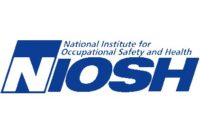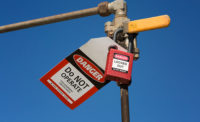Lockout/Tagout timeline: Then and now


Source: Graphic Products
Year after year, citations for Lockout/Tagout (LO/TO) failure continue to make the top ten list of OSHA violations. While overall citations decreased in 2014, failure to LO/TO showed the least improvement, arriving in sixth place. In 2013 OSHA focused specifically on LO/TO by adding an Amputations National Emphasis Program, which targets compliance with LO/TO and machine guarding standards. In the same year OSHA simplified the procedure for whistleblower complaints, by allowing individuals to complete an easy online form—available 24 hours a day. Filings immediately went up 40 percent within the first three months. A whistleblower complaint in late 2014 brought OSHA inspectors to Kobelco Stewart Bolling, Inc., where they found, among other hazards, repeat violations of machine guarding standards, which protect workers from lacerations, caught-in and amputation hazards. The company faces $139,000 in proposed penalties.
"Failing to protect workers from dangerous machinery is among the most frequently cited OSHA violations, and injuries involving machinery and equipment often result in death or permanent disability," said Howard Eberts, OSHA's area director in Cleveland. "Employers who are cited for repeat violations demonstrate a lack of commitment to employee safety and health."
Safety is a constant work in progress. Let’s take a look at how far LO/TO has come from the early industrial days of the late 1800s to the mid twentieth century.
1869
In the latter half of the 19th century newspapers would print gory details of work-related accidents. In response to labor advocates and general concern for the condition of the working classes, most states began to establish bureaus of labor statistics. Massachusetts set up the first such bureau in 1869. Soon many state bureaus began investigations into all facets of labor and industry and published data in their annual reports. One of their primary concerns was the emerging problem of hazardous industrial working conditions. Questionnaires were sent to employers, workers were interviewed, and statistical data was collected on deaths, injuries and illnesses. The bureaus' reports included examples of safe and healthful workplaces.
1875
In a Massachusetts 1875 report titled "Special Effects of Certain Forms of Employment upon Female Health" found that "The Working Girls of Boston" had a general deterioration of health. Many of the females questioned frequently got their fingers smashed or cut off from the punch presses in button factories. They reported that the factory gave free dressings the first three times an employee was injured, but after that she had to pay for her own
1877
The first law went into effect in Massachusetts, requiring guards on hazardous machinery. Other Northern industrial states soon followed, and fourteen states had similar factory acts on their books by 1897. Ten of those states gave their inspectors authority to require guarding of machinery.
1879
The safeguarding law in Massachusetts led to the establishment of the first inspection force within the state. Reports began emerging with notes such as the following: REASON FOR ACCIDENT: a 14?year?old girl lost four fingers because of "curiosity" (circa 1885).
A third law in 1887 banned workers under age 15 from cleaning machinery in motion.
Sweatshops in 1895 and bakeries in 1897 came under the scope of the inspection laws.
1890
After grotesque reports continued, more states followed Massachusetts’ lead by implementing mandatory inspections of machine guarding. The following is an excerpt from an Ohio report:
A buzz?saw operator got caught in his machine and lost an arm and a leg. A year earlier he had lost his right arm in the same manner. An engineer trying to oil machinery while it was in motion was killed when his head was caught against a post by a heavy fly wheel. A boy in a printing house working at a press tried to straighten out an improperly placed sheet of paper and had several fingers crushed when he did not get his hand out of the way in time.
The 1890 report of the New Jersey bureau noted labor agitation for healthier conditions in factories and stressed the importance of prolonging the life of the individual worker. The bureau hoped that its reports on working conditions would stimulate general interest and arouse public opinion to demand action.
1900
Obstacles for safeguarding appeared nationwide. A commissioner in New York reported in 1900 that about 75 percent of the workplaces he entered had unguarded machinery. Notices were posted in most New York factories forbidding the cleaning of machinery while it was in motion. Employees commonly ignored the warnings because companies usually expected the workers to do cleanup on their own time when the machinery stopped. The employees avoided having to spend their own time doing this by cleaning the machines while they were still running. Some inspectors reported that after installing safeguards on machinery, employees removed them. A few employers claimed to threaten to fire them if they wouldn't leave the devices alone.
1905
The initial focus of the industrial safety movement beginning in the early 1900's was to protect workers by providing adequate safeguarding of machinery. A movement to implement a national safety law began in 1905 by various employers.
1906
The use of belt shifting devices to protect against "scalping" accidents went into effect in 1906. Inspectors were given the authority to shut down any machinery that posed a serious danger by posting a notice on it that was not to be removed until the dangerous condition was eliminated.
1908
Widespread public concern was piqued by muckrakers in 1908. Investigators influenced the Russell Sage Foundation publishing of the Pittsburgh Survey, which documented the deaths of 526 workers and the permanent crippling of more than 500 others in the mills and factories of Allegheny County, Pennsylvania during a one-year period. The entire report pointed the blame at a lack of adequate machine safeguarding.
1910
Crystal Eastman's Work Accidents and the Law, published in 1910, helped put workers' compensation in a new light — as a preventive program — and won support for it from business and labor supporters. Isaac Rubinow, a leading advocate for Eastman's book was "the single strongest force in attracting public interest and arousing the public conscious" on industrial accidents.
1915
The Federal Government and a majority of the states enacted an early form of workers' compensation law which encouraged employers to self-regulate all aspects of safety on the job with emphasis on machine guarding. Lack of machine guarding was at that time the leading cause of injury.
1933-1938
Studies found that woodworking machines were the leading source of injuries on the job (18.5 percent), and circular saws were 53 percent of those injuries.
1946
In 1946, the National Safety Council published its first edition of its Accident Prevention Manual for Industrial Operations. It attempted to summarize in one volume previous and current concepts and technology regarding industrial safety and accident prevention. The text is the foundation for how today’s OSHA 1910.219 Safety Code for Mechanical Power Transmission Apparatus evolved.
Regarding guard construction, this text further states that, generally speaking, a guard should:
1.Provide positive protection.
2.Prevent all access to the danger zone during operation.
3.Cause the operator no discomfort or inconvenience.
4.Not interfere with operation.
5.Operate automatically or with minimum effort.
6.Be designed for the job and the machine.
7.Preferably be a built-in feature.
8.Provide for machine oiling, inspection, adjustment and repair.
9.Withstand long use with minimum maintenance.
10.Resist normal wear and shock.
11.Be durable, fire-and corrosion-resistant, and easily repaired.
12.Not constitute a hazard itself (without splinters, sharp [or] rough edges, or other sources of injury).
13.Protect against any contingency, not merely against normal operations.
14.Conform with the provisions of American Standards Association codes (now ANSI).
1956
The initial focus of inspections performed by the Department of Labor was to eliminate physical hazards, mostly revolving around machine guarding—which was still the leading cause of injury in the workplace.
In 1956 U.S. Department of Labor Secretary James P. Mitchell urged that early factory inspection laws deal exclusively with mechanical guarding, enclosure of belts, guarding of gears, railings around vats, etc… “Each State inspector should be primarily concerned with the elimination of physical hazards, although the scope of his activities has been greatly increased to include guarding at the point of operation, better lighting, better housekeeping, safer handling of materials, and the numerous other details that make the plant a safer workplace. However, the elimination of physical hazards, including the guarding of machinery, still remains a basic purpose of his inspection.”
Post Establishment of OSHA
OSHA’s current preventive measures include a Lockout/Tagout interactive training program found in 29 CFR 1910.147. The program was developed with the Directorates of Enforcement Programs, Safety Standards and Guidance, the Office of Training and Education, and the Office of the Solicitor. The program offers three components (Tutorial, Hot Topics, and Interactive case studies) that any employee or employer can go through at their own pace, found on the OSHA website.
2015 OSHA PLANS
Budget allocation has determined that OSHA plans to increase the number of Safety and Health inspections. While all types of violations will be addressed, watching for LO/TO failure will have acute emphasis by the organization.
Looking for a reprint of this article?
From high-res PDFs to custom plaques, order your copy today!





